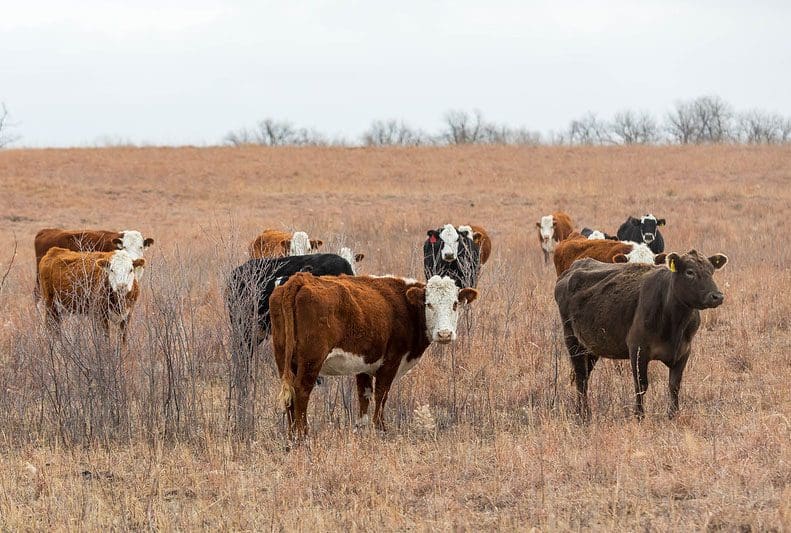By Lisa Moser, K-State Research and Extension news service
Manhattan, KS — No matter whether it is a pet or livestock, an animal dying unexpectedly is sad and concerning. It often leaves owners with questions about what happened and whether other animals will be impacted.
To get to the bottom of what is going on, Kansas State University beef cattle veterinarians emphasize the importance of a producer working with their local veterinarian to determine the cause of death.
On a recent Cattle Chat podcast, the veterinarians discussed a listener question in which two cows recently died unexpectedly in the herd and anaplasmosis was determined to be the cause of death.
“Anaplasmosis is a disease of the blood in which a parasite causes the red blood cells to be destroyed and the animal can die due to a lack of oxygen,” veterinarian Bob Larson said.
Veterinarian Brian Lubbers added that this disease more significantly impacts cows older than age 2 than it does the others in the herd.
“With this infection, the immune system takes the damaged red blood cells out of circulation and younger animals do a better job of regenerating them more quickly,” Lubbers said.
Both veterinarians agree that cattle death comes with little warning.
“Two days before they die, the cattle can appear normal, but then they fail quickly. It isn’t uncommon to have cattle death be the first sign of anaplasmosis in the herd,” Larson said.
The only visual sign of the disease prior to death is pale or yellow mucous membranes, Lubbers said.
Because the infection is spread primarily by ticks, the likelihood of disease is often greatest in the fall, a few weeks after tick populations peak. And, Larson said, the amount of anaplasmosis in the area will vary among geographic regions.
“If you live in an area that has anaplasmosis, then I would only buy replacement animals from areas that also expose replacements to the disease,” Larson said.
Once animals have recovered from this illness, they can be carriers of the disease, explains Lubbers.
Because this blood-borne disease is carried by ticks, it easily spreads through the herd. Syringe needles and palpation sleeves that are used with multiple animals in the herd can also spread the disease.
The K-State veterinarians also said cattle that do recover from this acute sickness may require a few months to build back healthy red blood cells.
Prevention is difficult, say the veterinarians, but prescribed feed additives can be used to mitigate the spread.
“This parasite is susceptible to some antimicrobials, and one FDA-approved drug used to treat it is tetracycline,” Lubbers said.
At this point in time there is not a good vaccine option to prevent this disease, said Larson.
“There is a lot of anaplasmosis vaccine research being done at K-State; this disease is difficult to build a safe and effective vaccine for, but I am hopeful that this research will lead to a better option in the future,” Larson said.
To hear the full discussion, listen to the Cattle Chat podcast online or on your preferred streaming platform.













